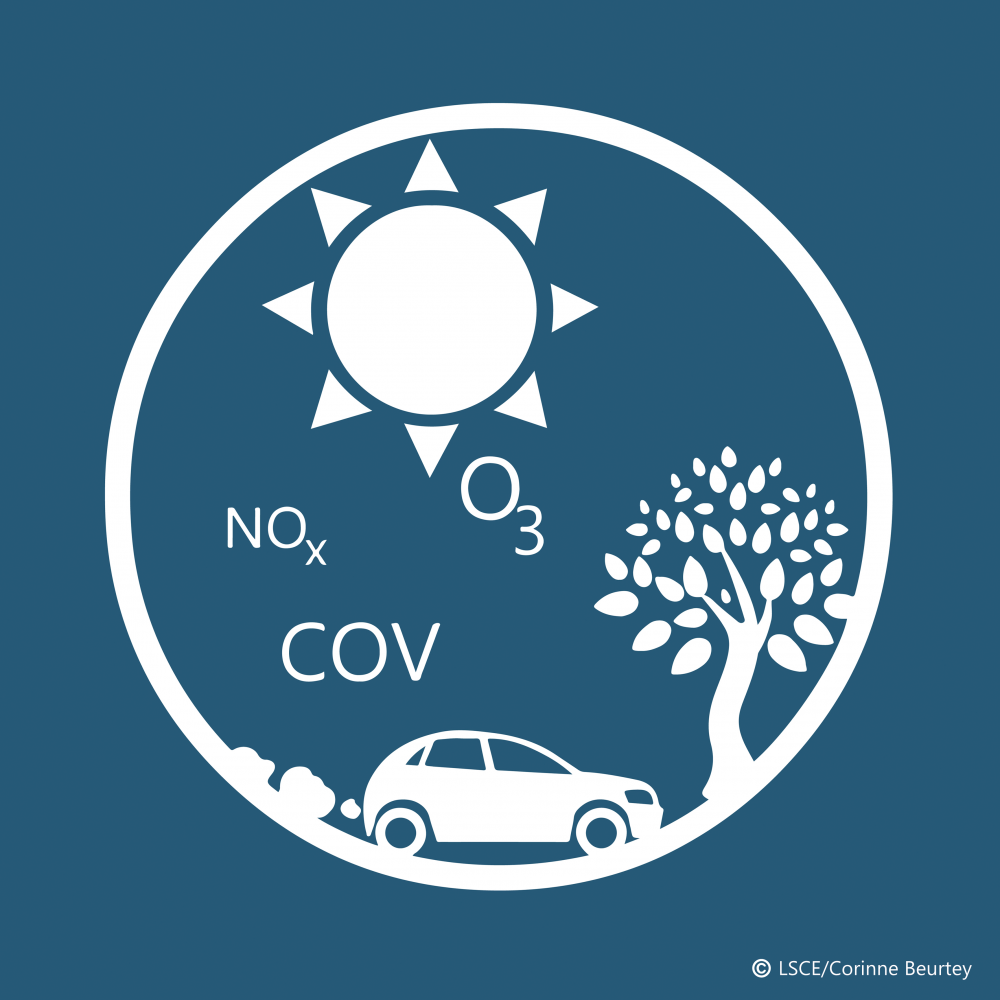The CAE team is working on measurements and studies of reactive species (gaseous and particulate) which can potentially impact health (air quality), ecosystems and more generally climate. The CAE team aims at characterizing and quantifying their sources, properties and their physicochemical transformations.
With this objective, the CAE group has developed expertise in:
- Developing and setting-up of experimental strategies on the field
The team actively participates to the development of (inter)national measurements stations (ACTRIS, GAW, SOERE/ORAURE, SIRTA), and has the responsibility of the reactive species observatory at Amsterdam Island and in the Paris area.
The team also coordinates and participates to numerous field campaigns in various environments which are relevant in term of atmospheric chemistry. The approach employed is based on multi-instrument campaigns, using sometimes different type of platforms (ground, ship, air and spatial) through (inter)national collaborations.
- Innovation in physics and chemistry analytical systems :
The team develops or adapts new technologies to help answering scientific questions: optimized laboratory or field chromatographs for measurements of Volatile Organic compounds (VOCs), mass spectrometer for fast measurements of VOCs (PTR-MS) and aerosols (ACSM), OH reactivity measurement, miniature aerosol counter, aerosol LIDAR, enclosure chamber for biogenic emissions determination, bio-aerosols measurements…
The team has initiated a few patents (some of them have led to an industrial exploitation) and works in collaborations with several industrials (Aerodyne, Leosphere, Environnement SA…) in order to help them by improving their instruments and/or by developing new analytical systems).
- Feedback :
On specific subjects, the CAE team collaborates with the persons working on modelling (of air quality, climate, ocean primary production…) in order to help models to better take into account the variety of sources and processes involved in the budget of reactive species. For example, studies have been performed (i) to improve the particulate air pollution forecast over Europe through the assimilation of observations from a LIDAR network, (ii) to integrate our knowledge on dust deposition and its impact on primary production in a dynamic-biogeochemistry model over the Mediterranean sea, iii) to integrate our knowledge on CO and VOCs marine sources in a biogeochemistry model.
Currently and in the next future a focus is made on different geographical zones
- Polar zones : studies on sea-air exchanges of trace gas species (CO and VOCs)
- Mediterranean zone : Study on sources and fast chemistry (reactivity, formation of ozone and secondary organic aerosols issued from biogenic and anthropogenic emissions)
- Paris and its region : Detailed and dedicated studies on pollution over (?) Paris and its region










